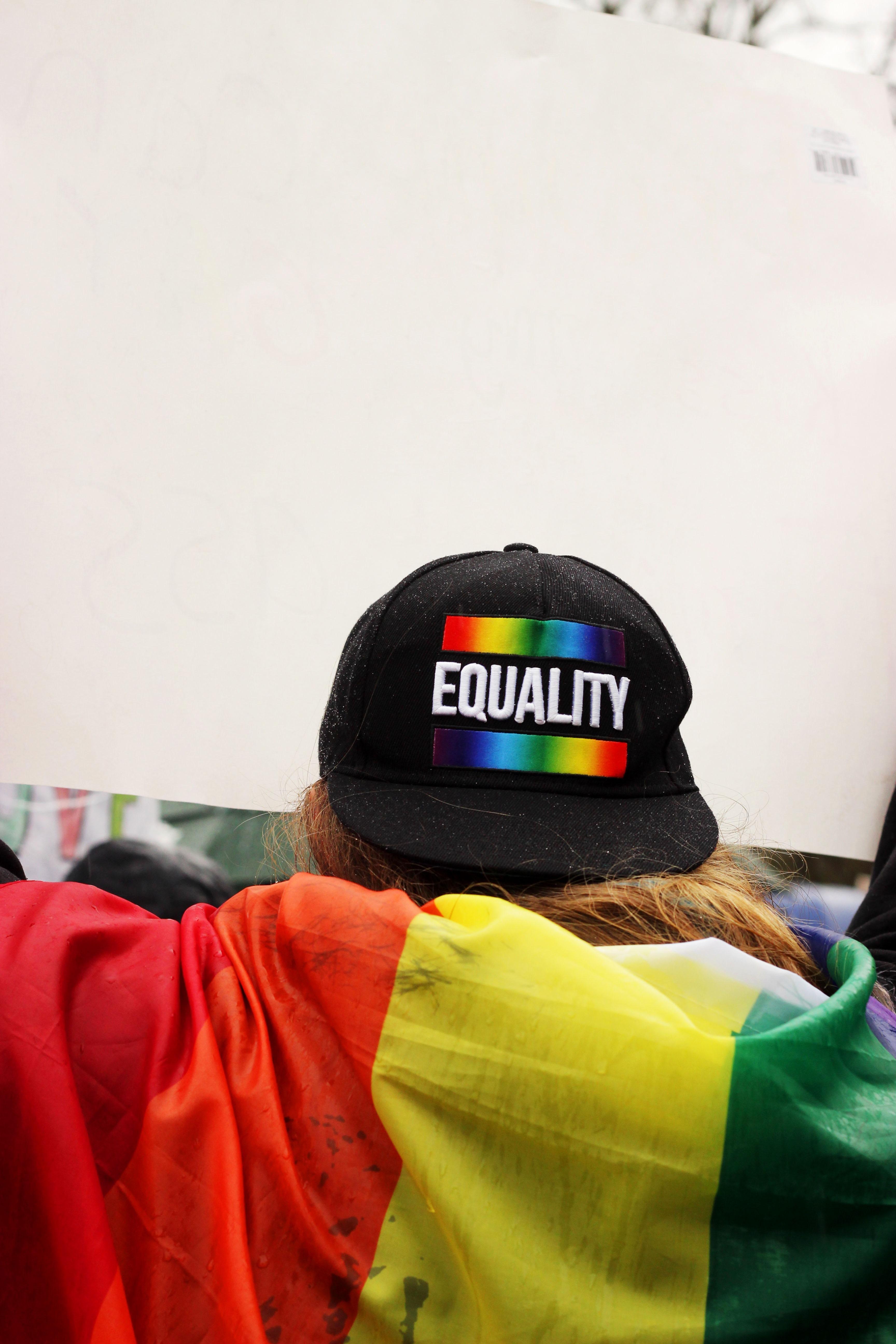How To Use Gender Neutral Language And Why It’s Important

The first time I heard someone refer to themselves as nonbinary I was in college. I had an acquaintance on my college campus, who I met as a female, but then later started identifying herself as male.
I graduated college in 2014 and since then the world has become more aware of the transgender and nonbinary community. There are now shows like “Pose,” “I Am Cait” and “Strut” that allow transgender and nonbinary people to tell their stories. We also have brave politicians like Christine Hallquist, the first transgender nominee for the governor of Vermont, who ran for office during the recent November 2018 midterms.
Simultaneously, however, right-winged conservatives like Laura Ingraham have been very closed minded about the transgender and non-binary experience. Ingraham went as far as linking LGBTQ rights to incest and suggesting her listeners wear adult diapers to avoid trans-inclusive restrooms. A transgender child in Virginia was left out of an active shooter drill because the teachers couldn’t identify whether to place them with the boys or the girls. And lastly, the Trump administration is trying to pass legislation that takes away the protections and recognition of transgender people under federal law.

Regardless of where you stand on LGBTQIA issues, transgender and binary people are here to stay. They’re our co-workers, family members, church patrons and part of the general population. People are even including their preferred pronouns in their email signatures for work purposes. While gender-neutral language isn’t typically something learned in school, its use is incredibly important to make life easier for everyone.
So, what is gender-neutral language? According to Oxford Dictionary, “gender neutral (or gender-inclusive) language is language that does not refer specifically to men or women, and so can be understood to include both sexes.” This language includes the term nonbinary (a person choosing not to be identified as either male or female); transgender (describing people whose sense of identity does not easily fit in with the ‘traditional’ division between male and female gender); and intersex (the physical condition of being partly male and partly female); and the pronoun ‘they.’
There are also additional terms such as transmasculine/transfeminine (people who do not identify as their assigned gender at birth (male or female) and may seek physical or social transition without identifying as solely male/female); and demiboy/demigirl (people who identify as another gender, or as no other gender at all. An example of someone saying this is that they’re ‘mostly a guy’ or ‘mostly a girl’ ).
There are common misconceptions of nonbinary and gender-neutral language, especially around the pronoun ‘they.’ According to Teen Vogue:
Many argue a singular “they,” compared to a plural “they,” is grammatically incorrect. However, English speakers have already been using “they” as a singular pronoun when they are unsure of a subject’s gender. Some examples include: “Someone left behind their sunglasses.” “When you can find someone to volunteer, could you thank them? Since language is fluid and constantly changing, major dictionaries such as Merriam-Webster and Oxford] have published statements in favor of using “they” both as a singular and plural pronoun. The Washington Post also reported that the singular “they” was declared “word of the year” in 2016 by the American Dialect Society.
Additional misconceptions are the belief that there are only two genders (many people forget about people who are intersex), that nonbinary people have a look (they don’t), and that being transgender or nonbinary is a mental illness.
While society has conditioned many people to think negatively about people who identify as nonbinary and transgender, it is important for us to unlearn those misconceptions and stereotypes to make our workspaces, communities, families and ultimately the world more inclusive, accepting and understanding. Using gender-neutral language can do just that.
If you want something more tangible, gender inclusive language affects binary transgender and (describing or connected with people whose gender is the same as it was at birth) as well. According to Dara Hoffman-Fox, LPC (a queer-identified mental health counselor whose passion is working with gender-questioning, transgender, and nonbinary clients):
Many women prefer not to be lumped into a group of “ladies” because of society’s expectations of how a lady should act. “There are people who aren’t nonbinary who are uncomfortable with binary gendered terms, thanks to these terms also being experienced as stereotypical… [So] shifting to gender-neutral language is of benefit not only to those who are nonbinary but to many others in society who feel that binary terms are inaccurate ways of describing them.”
So, how do you actually use gender-neutral language? Well, it’s not as hard as you may think. Here are some common tips for you to practice:
- Instead of “ladies and gentlemen” use“everybody”, folks, or folx.
- Stop defaulting to “man” in descriptors, i.e. “salesman”, “fireman”, “waiter/waitress”. Instead use Salesperson, sales representative, Firefighter or Server.
- Replace kiddo or child instead of boy/girl.
- Say partner, significant other, or spouse instead of girlfriend/boyfriend or wife/husband.
- Refer to mankind as humankind.
- Replace freshman with First-Year Student.

These examples and more can be found on Teenvogue.com and Bustle.com. If you’re still unsure of how to refer to someone, the next best step to take is to ask them what their preferred pronouns are, especially if you are in a work or business setting. This allows for open and honest dialogue so nothing gets misconstrued.
If you are reading this thinking, “this is too much,” I understand. Sometimes I struggle with using gender-neutral words. However, I care about the people in my life who are part of the LGBTQIA community, so I open myself up to learn and welcome correction. If I get overwhelmed, I request time to process the new information I received and ask to return to the topic another time.
However, if you don’t feel the same and refuse to change how you speak because you believe that’s your right, that’s fair. But that standpoint can also make you look inconsiderate, selfish and rude. And who wants to be around someone like that long term?
So, rather than pretending that transgender and nonbinary people don’t exist or ridiculing them, the best thing to do is accept them as humans with feelings who matter, just like everyone else. One of the best ways to accept (and acknowledge) them as an integral part of society is to start by using gender-neutral language.
If you’re interested in learning more about the transgender and nonbinary community, please listen to podcasts such as Marsha’s Plate, The Read, Never Before, and LGBTQ&A. You can also subscribe to Dara Hoffman’s Youtube channel.







